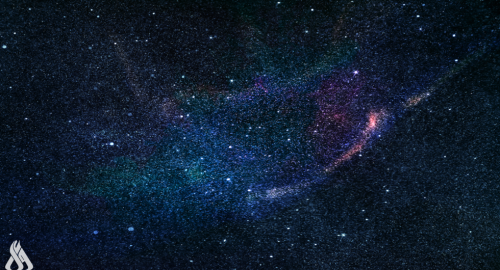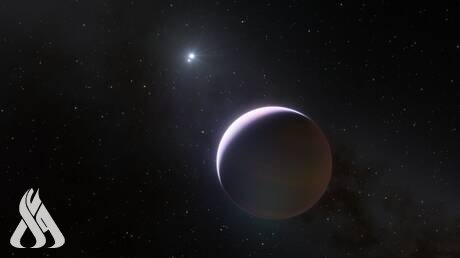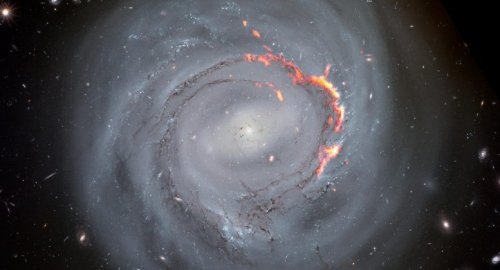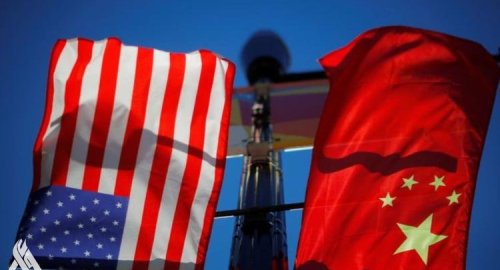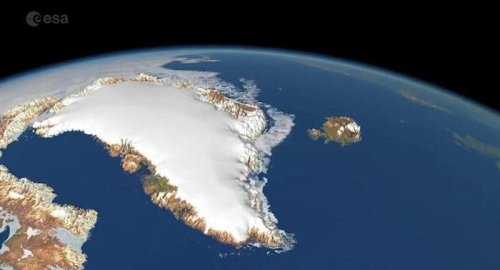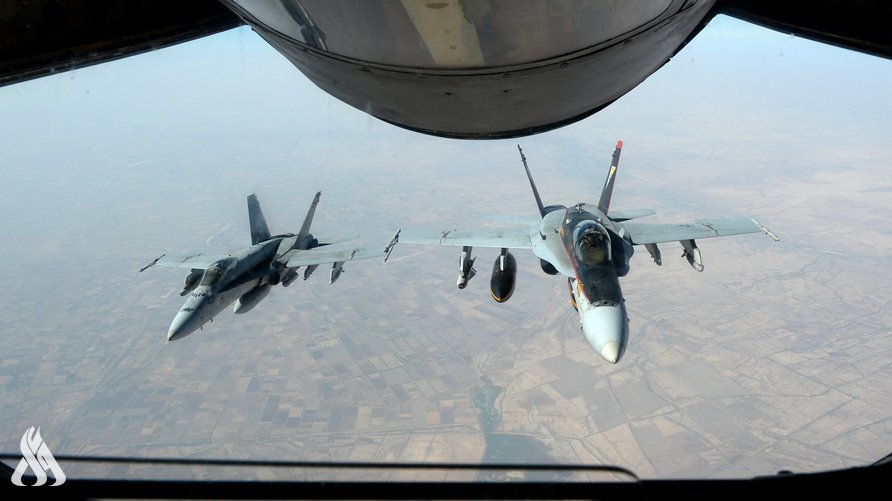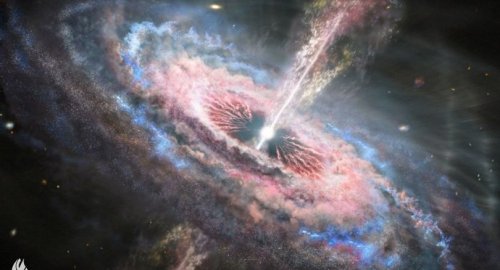
Scientists discover a way to see the beginnings of the universe

- 22-07-2022, 09:25
INA- sources
The study, which was published under the title "REACH: The Cosmic Hydrogen Radio Experiment" on patrol "astronomy natural" Today Friday, to the way or way "to look" from halal cosmic fog Which was formed in the early beginnings of the formation of the universe and the vision of the light emitted by stars And galaxies first in the universe.
Looking deep into the universe allows scientists to go back in time effectively and look into the outermost parts of the universe, which means seeing the light coming from its beginnings, which allows us to see Universe when it started.
However, doing so is considered difficult, as the scene is shrouded in fog, covered by thick clouds of hydrogen in addition to distortion caused by other signals that can get in the way of distant signals that scientists are now looking for.
This means that, although scientists know a good deal about the great explosion The beginnings of the universe, and how stars formed and evolved later, but the time interval between them is still largely a mystery.
Scientists still know relatively little about "the light the first" For the universe, when stars and galaxies began to transform and form, according to the British newspaper The Independent.
Now researchers from the University of Cambridge say they’ve found a new way that allows them to see all that visual noise, and find the things they’re actually looking for.
With this technology, astronomers will be able to observe the oldest stars as they interact with hydrogen withdrawal Scientists liken this to designing a landscape by looking at how its shadows appear in the mist.
To create the new methodology, the scientists combined a range of technologies from different fields that allow them to separate cosmic signals from interference and then separate them and allow researchers to specifically analyze space objects.
Scientists hope that better observations and observations will be made when we get the first results again from "Radio experiment to analyze cosmic hydrogen"or experience "Rich".
In this regard, the paper’s lead author, Eloy de Lira Acedo, from the Cavendish Laboratory in Cambridge, said: "At the time when the first stars were formed, the universe was mostly empty and made up mostly of hydrogen and helium".
He added: "Because of gravity, the elements eventually came together and the conditions were right for nuclear fusion, which formed the first stars. But it was surrounded by clouds of neutral hydrogen, which absorb light well, so it is difficult to detect or notice the light directly behind the clouds.".
And in 2018, the difficulties were clarified when scientists reported that they could see the first working light in the universe.
is that Astronomy scientists They find it difficult to replicate the result, and suspect that the results may be due to interference in the telescope.
But now, with the new method, scientists may be able to find the answer once and for all.
De Lira Asido said: "If we can confirm that the signal in that previous experiment was indeed from the first stars, the implications and results would be enormous".
“>
The study, published in the journal “REACH: The Cosmic Hydrogen Radio Experiment”, found astronomy Natural” today, Friday, to a way or a way to “look” from halal cosmic fog Which was formed in the early beginnings of the formation of the universe and the vision of the light emitted by stars And galaxies first in the universe.
Looking deep into the universe allows scientists to go back in time effectively and look into the outermost parts of the universe, which means seeing the light coming from its beginnings, which allows us to see Universe when it started.
However, doing so is considered difficult, as the scene is shrouded in fog, covered by thick clouds of hydrogen in addition to distortion caused by other signals that can get in the way of distant signals that scientists are now looking for.
This means that, although scientists know a good deal about the great explosion The beginnings of the universe, and how stars formed and evolved later, but the time interval between them is still largely a mystery.
And scholars still know relatively little about the light The first” of the universe, when stars and galaxies began to transform and form, according to the British newspaper The Independent.
Now researchers from the University of Cambridge say they’ve found a new way that allows them to see all that visual noise, and find the things they’re actually looking for.
With this technology, astronomers will be able to observe the oldest stars as they interact with hydrogen withdrawal Scientists liken this to designing a landscape by looking at how its shadows appear in the mist.
To create the new methodology, the scientists combined a range of technologies from different fields that allow them to separate cosmic signals from interference and then separate them and allow researchers to specifically analyze space objects.
Scientists hope that better observations and observations will be made when we get the first results again from the Cosmic Hydrogen Analysis Radio Experiment, or REACH.
“At the time when the first stars were formed, the universe was mostly empty and composed mostly of hydrogen and helium“.
“Because of gravity, the elements eventually came together and the conditions were right for nuclear fusion, which formed the first stars. But they were surrounded by clouds of neutral hydrogen, which absorb light well, so it’s hard to detect or notice the light directly behind the clouds.”
And in 2018, the difficulties were clarified when scientists reported that they could see the first working light in the universe.
is that Astronomy scientists They find it difficult to replicate the result, and suspect that the results may be due to interference in the telescope.
But now, with the new method, scientists may be able to find the answer once and for all.
“If we can confirm that the signal in that previous experiment was indeed from the first stars, the implications and the results would be enormous,” said de Lira Acedo.
Source: archyde
China Says It 'Firmly Opposes' US Military Aid To Taiwan
- International
- 07:36
First joint picture of Greenland Ice Sheet melting, ESA
- Multimedia
- 09:28
US Central Command: We killed ISIS terrorist leader Abu Yusuf in Syria
- International
- 24/12/20
Liverpool compete with Real Madrid to sign Olympique Lyonnais star
- Security
- 24/12/19
ISC, ADX discuss Strengthening Economic Ties
- Economy
- 24/12/16
Iraq assumes presidency of Arab Investment Company’s Executive Board
- Economy
- 24/12/17
